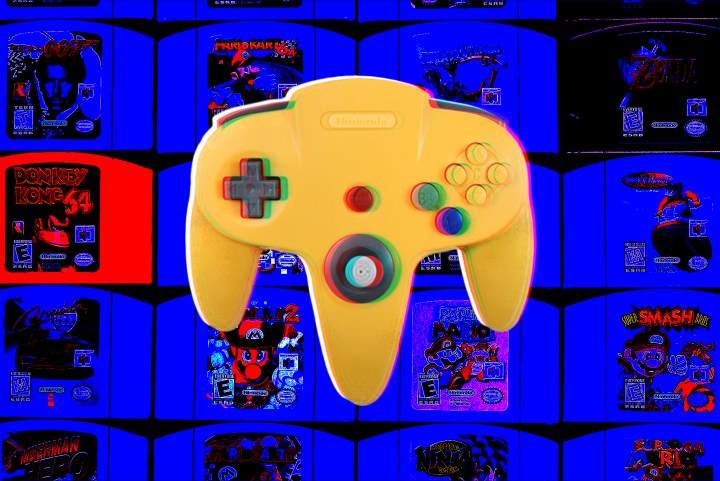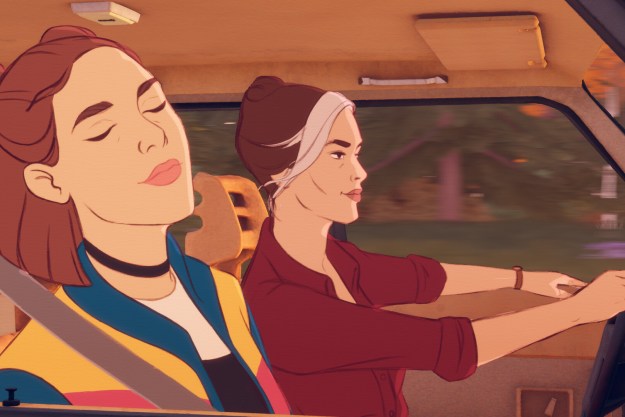Any debate about the “best video game consoles of all time” always features a few prominent systems. The Super NES and PlayStation 2 are a couple you can expect to come up every time the conversation rears its head. One of the biggest contenders in that ongoing conversation is Nintendo’s big entrance into the world of 3D: The Nintendo 64. It’s funny that it’s such a beloved system 15 years later, because it may be the worst best console out there.
The Nintendo 64 did a lot for the world of modern gaming. It showed us how platformers should work in 3D, gave us immersive worlds that stood out at the time, and featured some of the most influential titles, many of which are still cited as inspirations to this day. So what earns it that “worst” prefix? It comes down to both hardware and its library of games beyond the hits.

Let’s talk hardware
That late 2000s 3D era featured four consoles to finish off the “retro generation.” Those consoles were the Sega Saturn, Nintendo 64, Sony PlayStation, and the hybrid-generation Sega Dreamcast. Nintendo’s system may hold a fonder place in players’ hearts than the others, but the hardware tells a different story.
The PS1 and Dreamcast used a CD format for games, giving them both higher sound quality and better graphics. That helped both systems build stronger game libraries with more consistency. The Dreamcast sported arcade-perfect ports and pushed what a home console could do with its Hitachi SH-4 CPU. The PlayStation had 3,000 games to choose from, becoming what many would categorize as “the console” for multiple genres at the time.
The PlayStation dominated the Nintendo 64 when it came to power, despite having weaker hardware. While the N64 was a much more powerful system, it was held back by Nintendo’s choice to continue with its cartridge format. Those helped with visuals and load times, but ended up bottlenecking the console’s true capabilities. Meanwhile, the PlayStation CDs could hold games up to 700MB in size compared to the N64 cartridges’ 64MB, along with its single CPU and unified memory architecture. This left more room for better audio and textures, full-motion videos, and bigger games, and made the console easier to develop for. And we can’t forget the CD player capabilities that made Sony’s console a 2-in-1 entertainment machine, setting the stage for future consoles.
And who can forget that cursed controller? While Nintendo was innovative in its popularization of the thumbstick, the controller is still an anomaly. I’m sure we’ve all asked this once in our lives, but what was going on when Nintendo approved a three-prong design that’s better-suited for octopi than humans? There’s a big reason PlayStation kept its basic controller philosophy around while Nintendo has moved on entirely. The N64’s bizarre gamepad didn’t make sense in the moment and feels especially alien today.

Shovelware central
You’ve probably heard the word “shovelware” tossed around a few times when talking about systems like the Nintendo Wii. In the gaming world, that term refer to low-quality games generally pumped out to make a quick buck. They’re usually cheaply priced to entice unaware buyers. To someone who’s not tuned into what games are good, they might think they’re getting a deal out of the bargain bin at their local Walmart.
The Nintendo 64 is a console where shovelware came to thrive, much like some of its successors. While the PlayStation 1 and 2 had their fair share of shovelware, too, keep in mind their overall game count towered over that of the 64’s 393. Yes, you read that right: The N64 only had a library of 393 games total.
The counterargument here is that you couldn’t play Bio F.R.E.A.K.S, War Gods, or Xena: Warrior Princess on the PS1. Oh, you didn’t want to? My bad.

Seriously, take a close look at the full N64 library. It features around 20 games that are considered “greats” on the console. When you hear talk of the system, there’s always the same few oddball outliers brought up as the system’s hidden gems, like Glover, Mystical Ninjas, and Mischief Makers. But a lot of its library is just racing and sports games. Nintendo’s refusal of CD technology, despite the industry moving toward it, resulted in less third-party support, which meant less games overall.
The Nintendo 64 had an overall weak library, but its peaks were especially high. The reason you always see N64 games featured in lists of the greatest games of all time is because those titles literally changed the shape of the medium as a whole. So much so that I don’t even have to go in detail on why games like The Legend of Zelda: Ocarina of Time and Super Mario 64 are fundamental building blocks that developers still draw from today.
The Nintendo 64 is also one of the best local multiplayer consoles there is thanks to the four controller ports. If you own an N64, you probably have four controllers and have brought it out to play party games with friends in your lifetime. It features multiplayer classics like Mario Kart, Smash Bros. 64, Excitebike 64, Mario Tennis, GoldenEye 007, Snowboard Kids, Diddy Kong Racing, and so on. It’s literally a party in a box. And those are part of the reason the console continues to be relevant years later.
However, those big hits are a drop in the console’s tiny lineup that’s dominated by shovelware. When you compare two friends’ N64 game collections, you’ll probably notice a fair amount of crossover. There’s just not a lot to enjoy past the peak.
Why is the Nintendo 64 still growing in popularity?
If the N64 was inferior to its competitors in hardware and library, why is it still so popular? Four years ago, retro game sellers told Kotaku that the Nintendo 64 was the “hottest holiday seller.” Two years ago, Nintendo Life reported that the console’s price soared in eBay listings, signifying a growing demand. And last year alone, largely due to a pandemic that had players gaming more than ever, people were hunting for retro consoles at an unprecedented clip, including the N64.
As far as I can tell, there’s one driving reason behind this anomaly: Nostalgia.

The generation that grew up with the Nintendo 64 has grown up with money in its pockets. Warm memories and extra cash are always a deadly combination, but toss in some social isolation and you’re going to get a growing interest. It may even be more popular now than it was when it released — the console sold a modest 32.9 million units in its lifetime, putting it behind the SNES and somewhat unpopular Xbox One. Its legacy keeps that nostalgia alive, and that’s held together by a handful of good games that play an important role in fans’ memories.
The Nintendo 64 is a pretty bad package when compared to other more well-rounded consoles, but where it excels, it knocks it out of the park. Does it deserve to be considered one of the best of all time? Probably not. But the amazing games that it boasts present its believers with a fair argument. Though I’d argue that a dozen godlike games doesn’t put a console in the top-five-of-all-time discussion.
It’s hard to say what makes a console truly great. For me, its a balance between quantity and quality. We’re seeing now that console exclusives are becoming less important to companies like Microsoft, which is doubling down on game services that make multiplatform games easier to buy. Companies are more willing to share the pie and get good games to more owners than ever, despite their console preferences. Nintendo only doubled down on its commitment to exclusives that couldn’t be played elsewhere due to the N64’s restrictions — a philosophy that’s carried over to its consoles after that. Some may argue Nintendo still hasn’t grown out of that even after moving to the Nintendo Switch.
Once you get past the N64’s few quality titles, what’s left when compared to the staggering amount of high-quality games on the PlayStation? For some, those few hits may be all the N64 needed, but I need a wider range of quality choices when it comes to my consoles.
Editors' Recommendations
- Amazon’s Fallout success reveals a big problem with the video game business
- The Nintendo Switch just got 2 surprise games — and they’re both worth grabbing
- Nintendo Indie World 2024: How to watch and what to expect
- If you love Amazon’s Fallout, play the series’ best games on Game Pass and PS Plus next
- Square Enix just set a new bar for video game demos with its latest RPG




